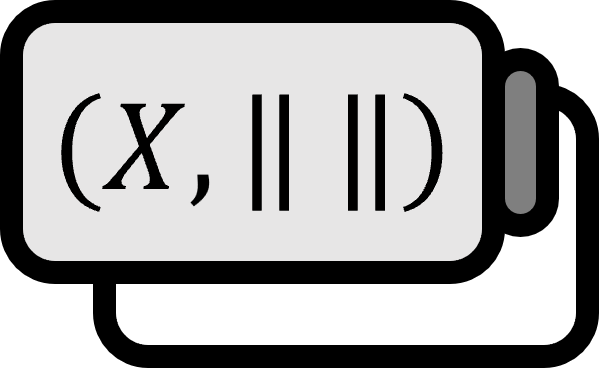Proof that All Isometric Mappings are Embeddings
Theorem
Let’s call $(X, \left\| \cdot \right\|_{X}), (Y, \left\| \cdot \right\|_{Y})$ a norm space. And let’s say $f : X \to Y$ is an isometry. Then, $f$ is an embedding. In other words, $f$ satisfies the following two conditions.
(a) $f(X) \subset Y$
(b) $f : X \to f(X)$ is a homeomorphism.
Proof
Strategy: Prove $(b)$ first, then prove $(a)$. Although there isn’t anything particularly difficult in each proof process, it may seem challenging due to the use of various definitions.
(b)
Let there be two topological spaces $X$ and $Y$. For a bijective function $f : X \to Y$, the following three conditions are equivalent.
- $f$ is an open mapping.
- $f$ is a closed mapping.
- $f^{-1}\ : Y\to X$ is a continuous mapping.
To show that $f : X \to f(X)$ is a homeomorphism, we need to show that $f$ is bijective, continuous, and $f^{-1}$ is continuous.
Part 1. $f : X \to f(X)$ is bijective.
It is trivial that $f : X \to f(X)$ is surjective. Assume $f(x_{1})=f(x_{1})$. Then, $d_{y} \big( f(x_{1}),\ f(x_{2}) \big)=0$. Since $f$ preserves distance, $d_{x}(x_{1}, x_{2})=0$. Therefore, $x_{1}=x_{2}$ and thus $f$ is injective.
Part 2. $f : X \to f(X)$ is continuous.
Since $f$ is bijective, for any $y\in f(X)$, there exists a unique $x\in X$ satisfying $f(x)=y$. Hence, because $f$ is an isometry, for any positive $r>0$, the following formula holds.
$$ f^{-1}\big(B_{d_{Y}}(y,r) \big)=B_{d_{X}}(x,r) $$
For any open set $V\subset f(X)$, since $f^{-1}(V)$ is an open set, $f$ is continuous.
Part 3. $f^{-1}$ is continuous.
By the same reasoning, for any $x \in X$ and $r>0$,
$$ f \big( B_{d_{X}}(x,r) \big) = B_{d_{Y}}\big( f(x),r\big) $$
Therefore, $f$ is an open mapping. Consequently, according to the lemma, $f^{-1}$ is continuous.
■
(a)
Let us say $x_{1},x_{2} \in X$. Then, $f(x_{1}),f(x_{2}) \in f(X)$. Since $X$ is a norm space and thus a vector space, $x_{1}+x_{2}=x\in X$. The isometric map $f$ is linear, so $f(x)=f(x_{1}+x_{2})=f(x_{1})+f(x_{2})$. Also, because of $x\in X$, $f(x) \in f(X)$. Therefore, whenever $f(x_{1}), f(x_{2}) \in f(X)$, $f(x_{1})+f(x_{2})=f(x)\in f(X)$, so it is closed under addition. The same logic can be used to show that it is closed under multiplication. Therefore, $f(X)$ is a subspace of $Y$.
■
